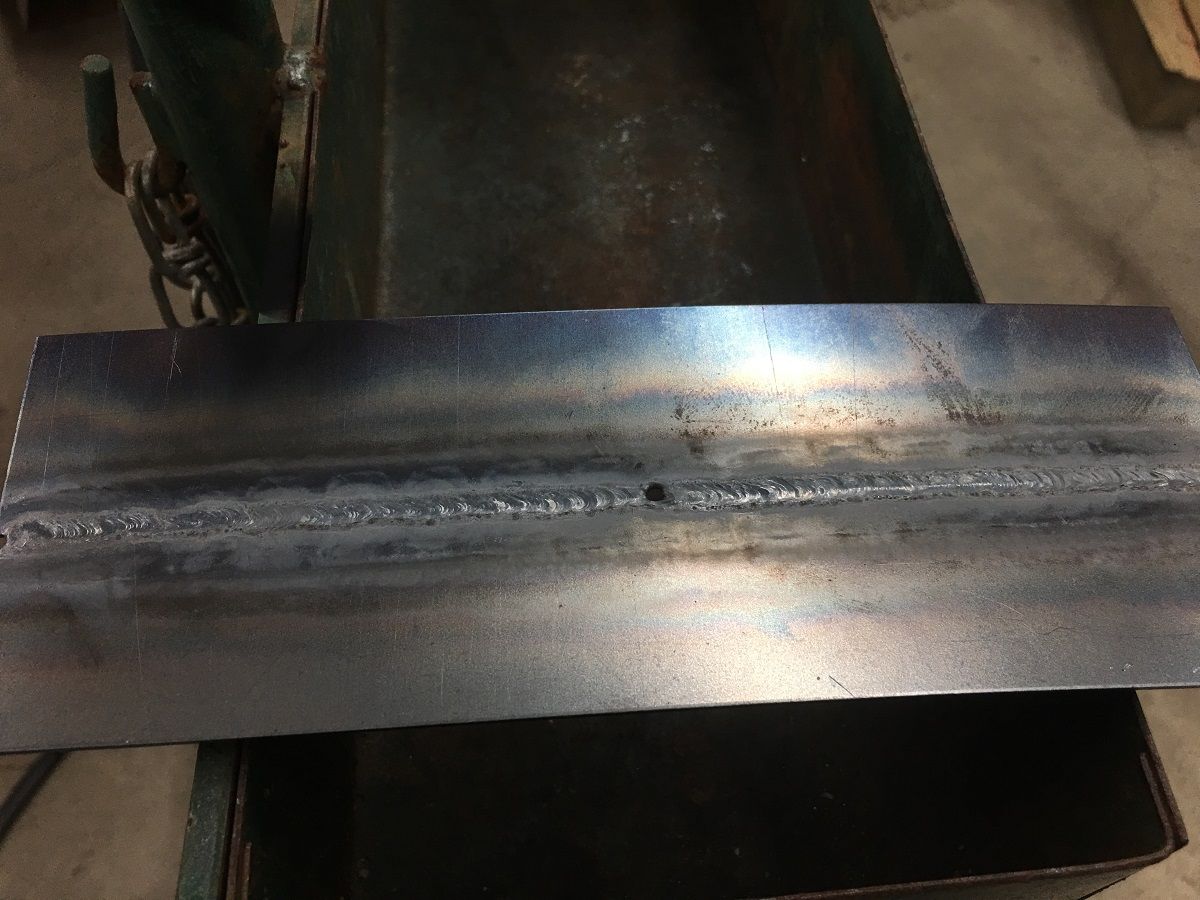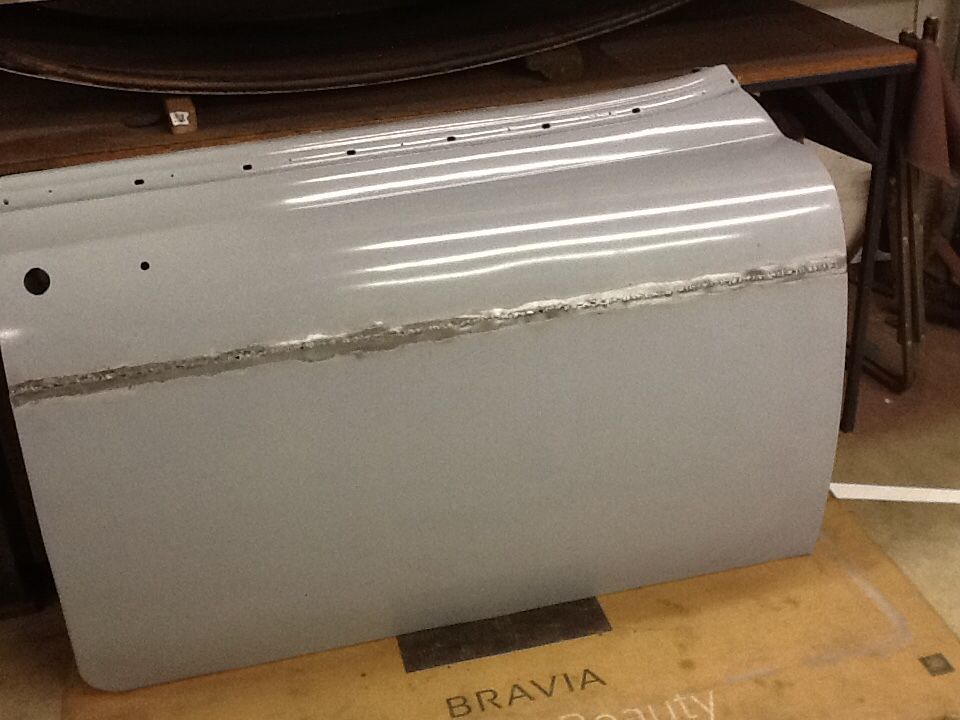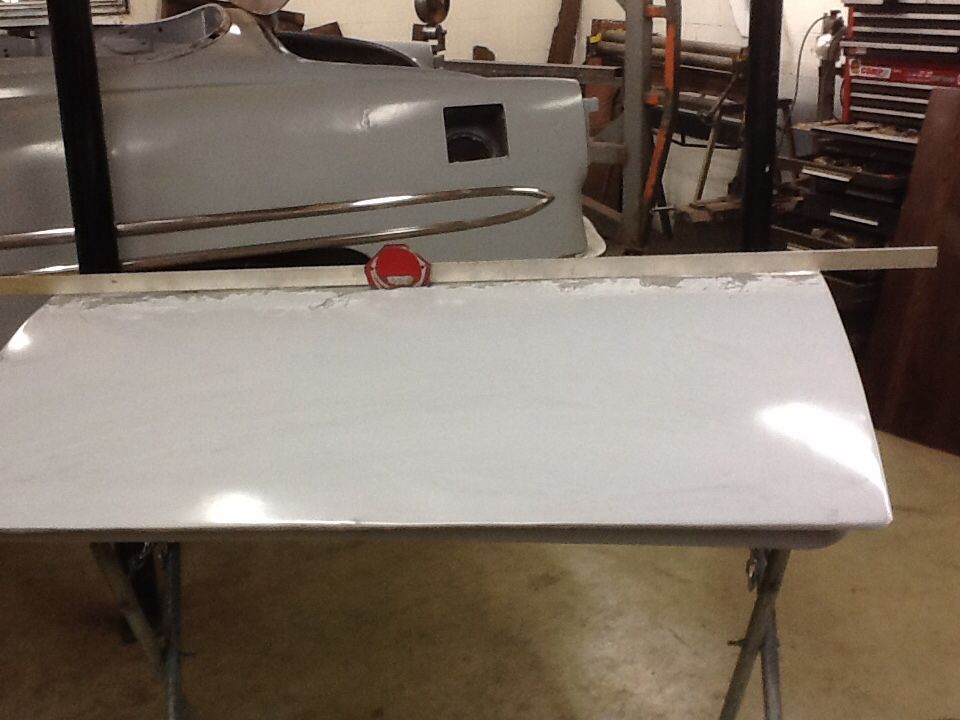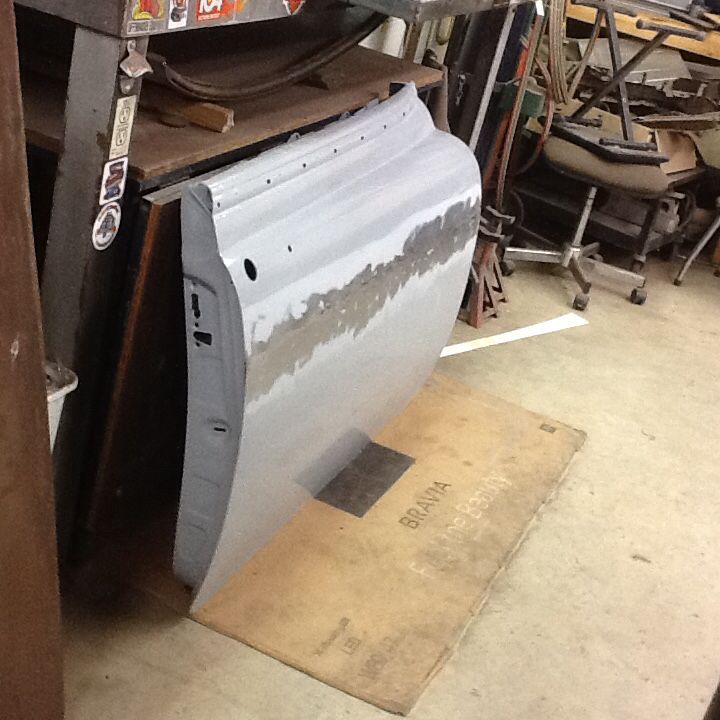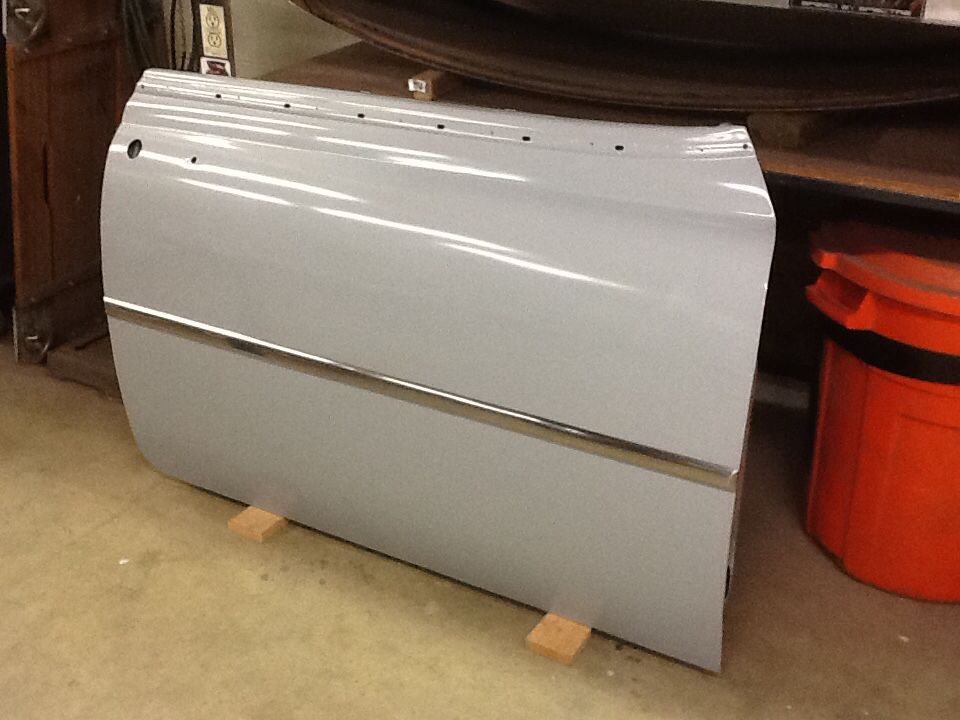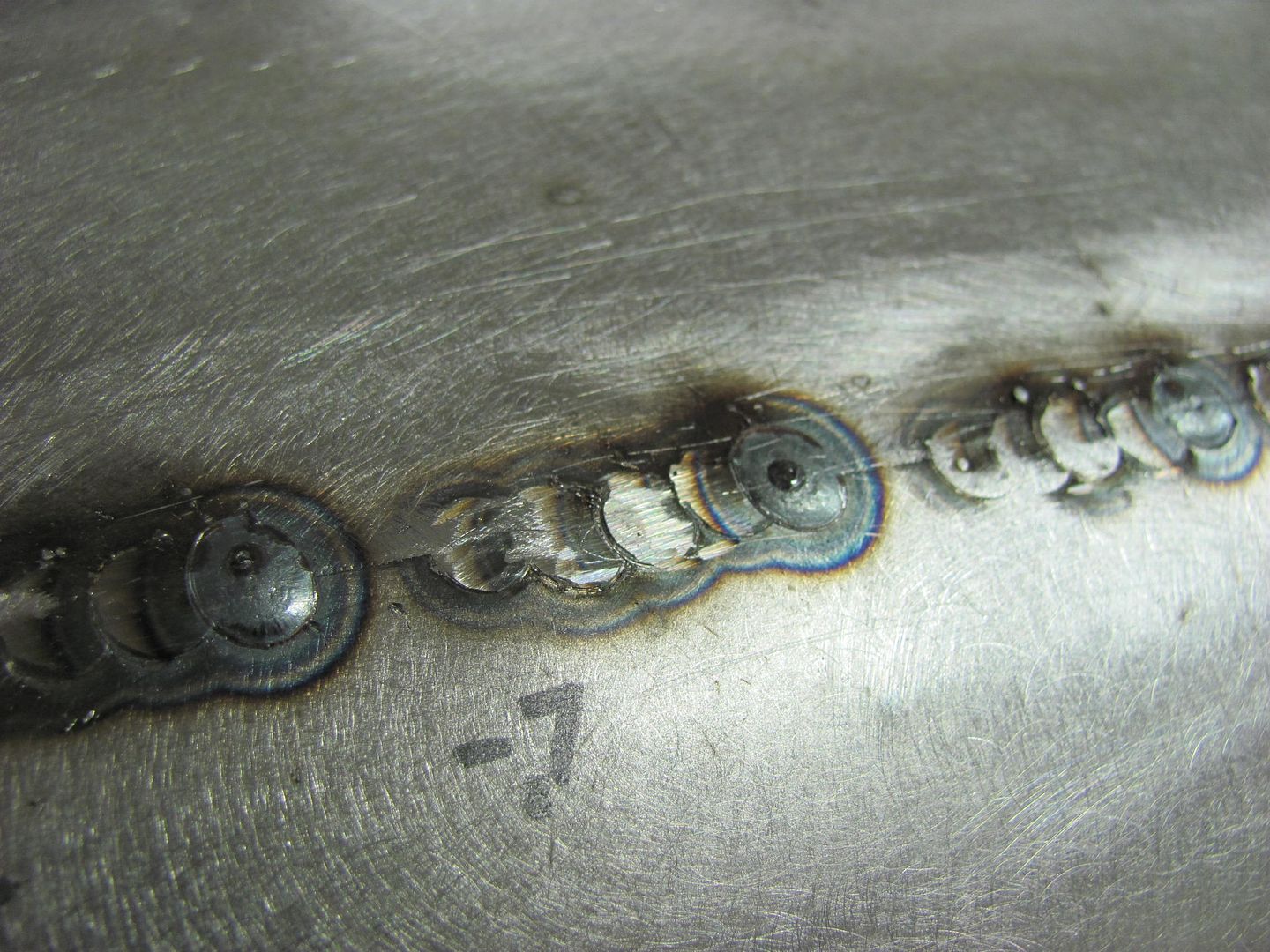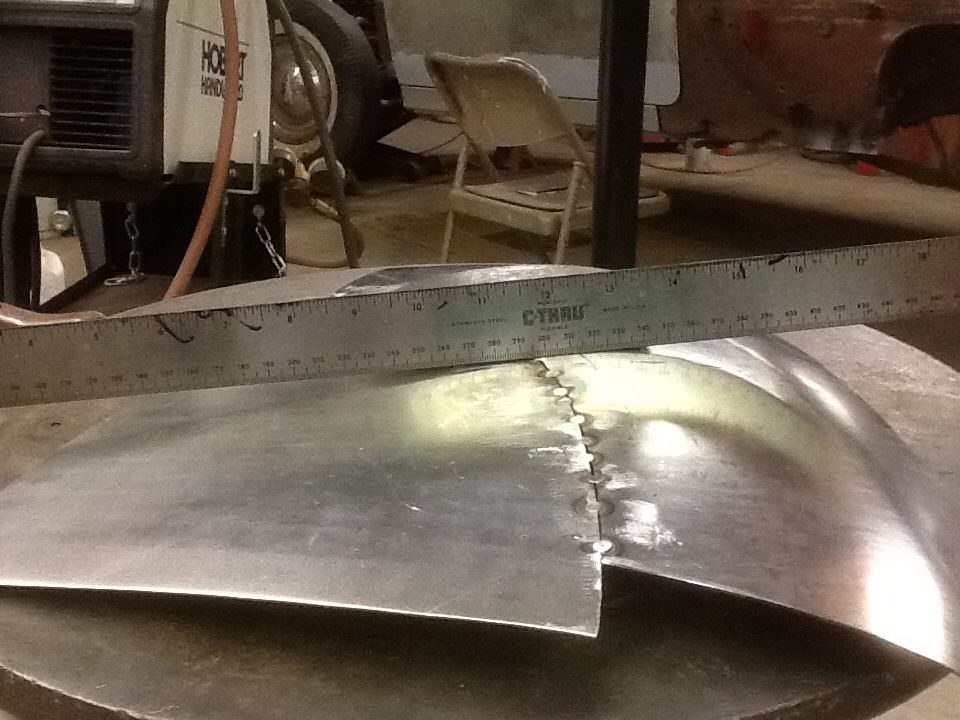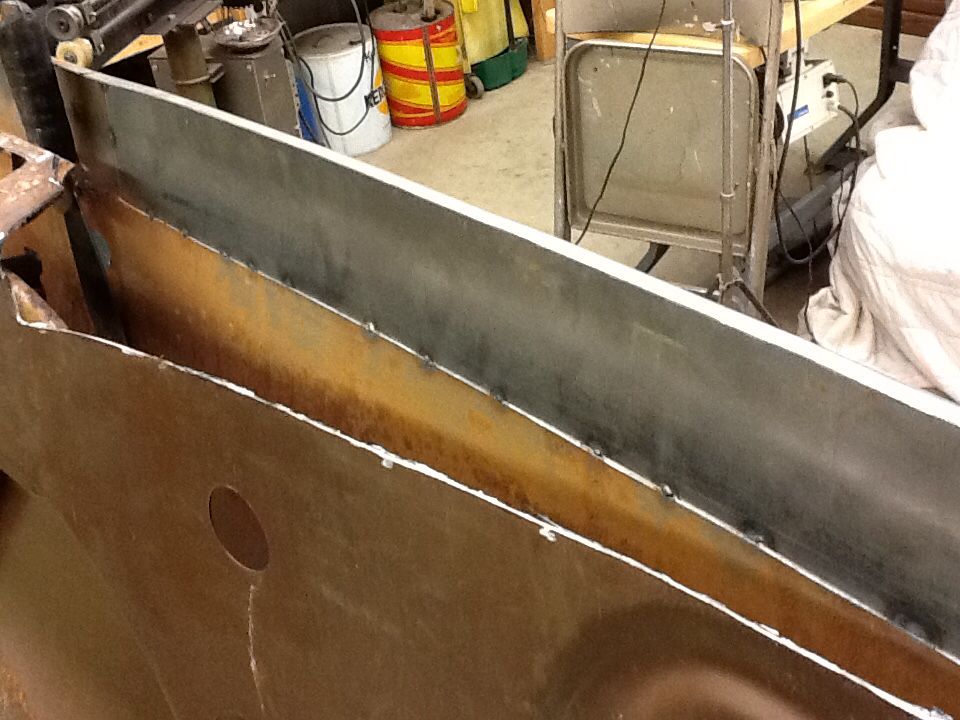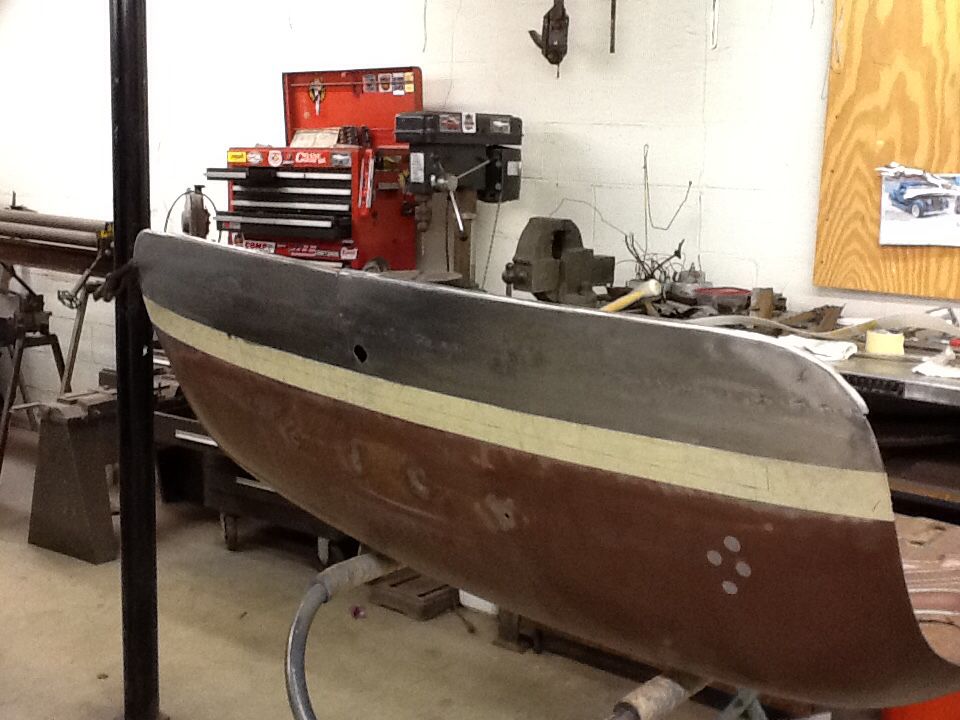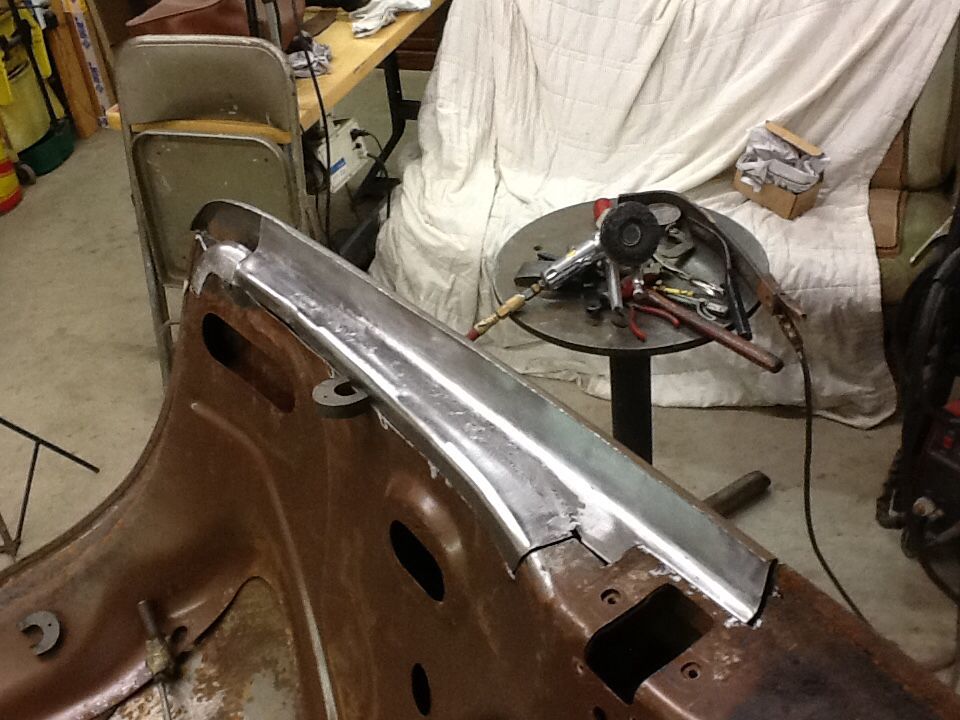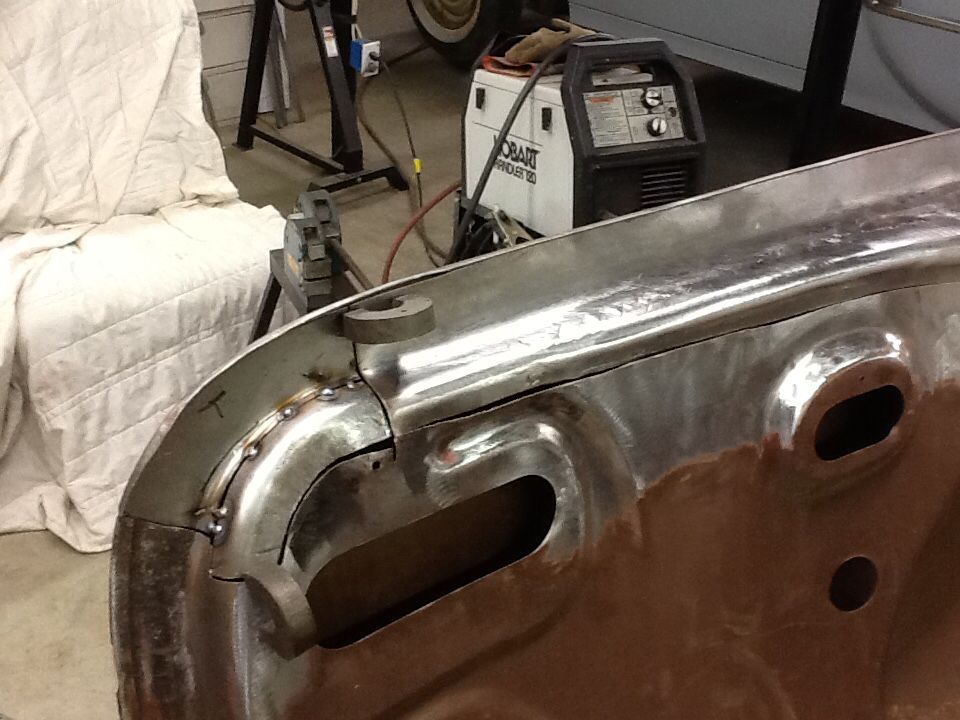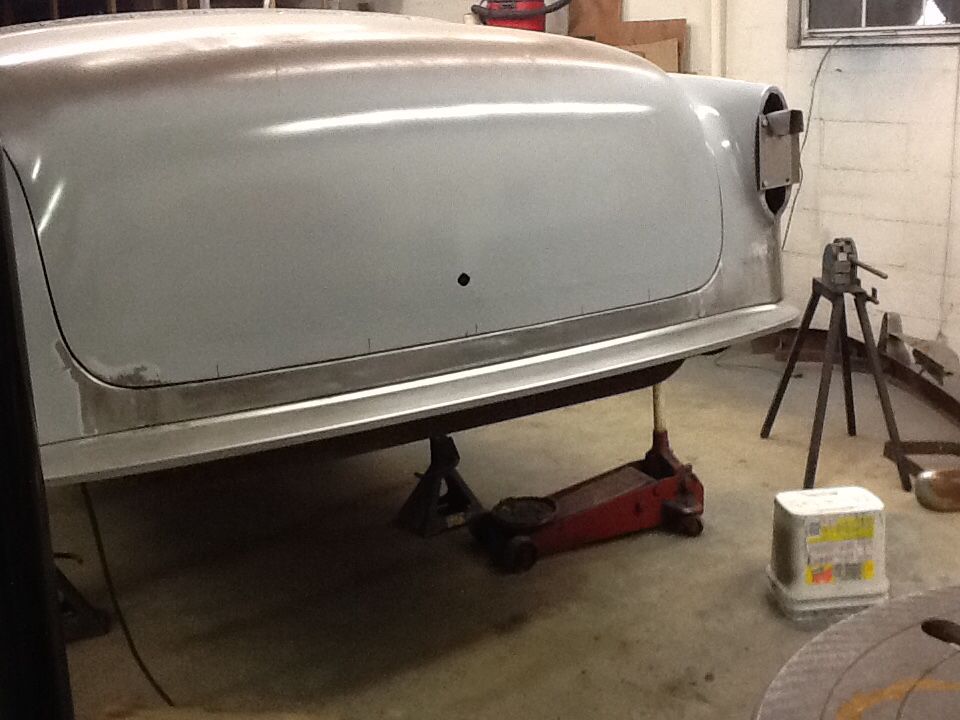I'm working on a 71 Chevy C-10 PU. Owner decided that he wanted to fill the marker light holes. So I did the fenders first. Cut out the depressed area of the marker light hole (where the marker light bolts in. Made my patch and welded them in. The first one I used Oxy/Acetylene and it went pretty crazy (warping) as I welded it. No real problem as I just hammered and dollied it until I got it straight again. (Oxy/Acetylene welds are soft) But that took a long time so on the other fender I figured I'd MIG it in because i didn't want to spend as long on it. Well doing it the standard way I've always done, by tacking it, letting it cool, spotting it jumping around, eventually connecting the spots etc. the fender went crazy warping a lot. Had to stop several times grind, hammer then dolly to keep it relatively flat. Got it done and flat but that took a long time as well.
Now got to do the holes in the bed, I don't have near the access that I had with the fenders so I'm tempted to leave the depressed area of the marker light hole there and fit the patch to the opening. I'm scared if I cut the depressed area out then fit my patch the bed is gonna go crazy as well. Will I have an issue with ghosting if I fit the patch to the opening without taking out the depressed part? I wont be overlapping it but fitting the patch to the opening. Truck is going to be black so I'm a little nervous about doing it that way. Thoughts?
Now got to do the holes in the bed, I don't have near the access that I had with the fenders so I'm tempted to leave the depressed area of the marker light hole there and fit the patch to the opening. I'm scared if I cut the depressed area out then fit my patch the bed is gonna go crazy as well. Will I have an issue with ghosting if I fit the patch to the opening without taking out the depressed part? I wont be overlapping it but fitting the patch to the opening. Truck is going to be black so I'm a little nervous about doing it that way. Thoughts?





